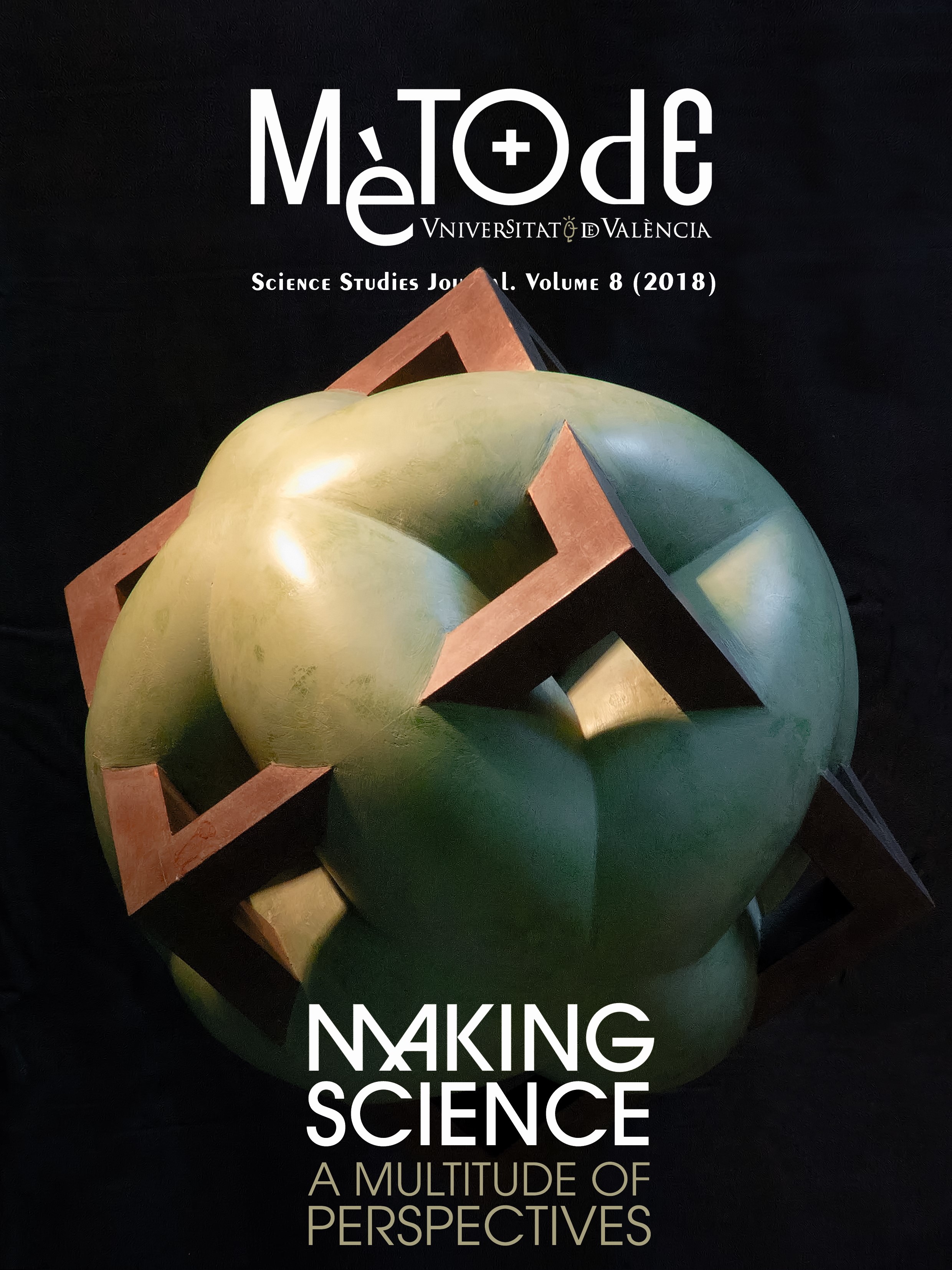El papel del cerebro en las decisiones financieras: Una visión del campo de la neuroeconomía
DOI:
https://doi.org/10.7203/metode.0.6923Palabras clave:
mercados financieros, toma de decisiones, neuroeconomía, cerebro Resumen
Resumen
En este artículo, exponemos el importante papel que representa la neurociencia en un entorno económico y financiero. En este sentido, presentamos la neuroeconomía para describir cómo los procesos de toma de decisiones afectan a la actividad cerebral, señalando y poniendo el foco en la importancia de las decisiones económicas y financieras. En el artículo respondemos algunas cuestiones sobre los estímulos neuropsicológicos y cómo afectan a nuestras decisiones económicas, el papel de las emociones en las finanzas y los factores psicológicos que están presentes en los mercados financieros. Citamos también las principales obras de investigación sobre neurociencia y procesos de toma de decisiones financieras y destacamos la investigación que se está llevando a cabo en estas áreas.
 Descargas
Descargas
 Citas
Citas
Adolphs, R., Gosselin, F., Buchanan, T. W., Tranel, D., Schyns, P., & Damasio, A. R. (2005). A mechanism for impaired fear recognition after amygdala damage. Nature, 433(7021), 68–72. doi: 10.1038/nature03086
Bechara, A., Damasio, H., & Damasio, A. R. (2000). Emotion, decision making and the orbitofrontal cortex. Cerebral Cortex, 10(3), 295–307. doi: 10.1093/cercor/10.3.295
Bertrand, M., Mullainathan, S., & Shafir, E. (2006). Behavioral economics and marketing in aid of decision making among the poor. Journal of Public Policy & Marketing, 25(1), 8–23. doi: 10.1509/jppm.25.1.8
Biel, A., & Gärling, T. (1995). The role of uncertainty in resource dilemmas. Journal of Environmental Psychology, 15(3), 221–233. doi: 10.1016/0272-4944(95)90005-5
Blanchard, O. J., & Watson, M. W. (1982). Bubbles, rational expectations and financial markets. NBER Working Paper Series, 945. doi: 10.3386/w0945
Breiter, H. C., Aharon, I., Kahneman, D., Dale, A., & Shizgal, P. (2001). Functional imaging of neural responses to expectancy and experience of monetary gains and losses. Neuron, 30(2), 619–639. doi: 10.1016/S0896-6273(01)00303-8
Camerer, C. (2007). Neuroeconomics: Using neuroscience to make economic predictions. The Economic Journal, 117(519), C26–C42. doi: 10.1111/j.1468-0297.2007.02033.x
Camerer, C., Loewenstein, G., & Prelec, D. (2005). Neuroeconomics: How neuroscience can inform economics. Journal of Economic Literature, 43(1), 9–64. doi: 10.1257/0022051053737843
Damasio, H., Grabowski, T., Frank, R., Galaburda, A. M., & Damasio, A. R. (1994). The return of Phineas Gage: Clues about the brain from the skull of a famous patient. Science, 264(5162), 1102–1105. doi: 10.1126/-science.8178168
Davidson, R. J., Putnam, K. M., & Larson, C. L. (2000). Dysfunction in the neural circuitry of emotion regulation—A possible prelude to violence. Science, 289(5479), 591–594. doi: 10.1126/science.289.5479.591
Gallese, V., Keysers, C., & Rizzolatti, G. (2004). A unifying view of the basis of social cognition. Trends in Cognitive Sciences, 8(9), 396–403. doi: 10.1016/j.tics.2004.07.002
Gross, J. J., & John, O. P. (2003). Individual differences in two emotion regulation processes: Implications for affect, relationships, and well-being. Journal of Personality and Social Psychology, 85(2), 348–362. doi: 10.1037/0022-3514.85.2.348
Güth, W., Schmittberger, R., & Schwarze, B. (1982). An experimental analysis of ultimatum bargaining. Journal of Economic Behavior and Organization, 3(4), 367–388. doi: 10.1016/0167-2681(82)90011-7
Hsu, M., Bhatt, M., Adolphs, R., Tranel, D., & Camerer, C. F. (2005). Neural systems responding to degrees of uncertainty in human decision-making. Science, 310(5754), 1680–1683. doi: 10.1126/science.1115327
Jin, H., & Zhou, X. Y. (2011). Greed, leverage, and potential losses: A prospect theory perspective. Mathematical Finance, 23(1), 122–142. doi: 10.1111/j.1467-9965.2011.00490.x
Judge, T. A., & Bono, J. E. (2001). Relationship of core self-evaluations traits — self-esteem, generalized self-efficacy, locus of control, and emotional stability — with job satisfaction and job performance: A meta-analysis. Journal of Applied Psychology, 86(1), 80–92. doi: 10.1037/0021-9010.86.1.80
Kahneman, D. (2003). A perspective on judgment and choice: Mapping bounded rationality. American Psychologist, 58(9), 697–720. doi: 10.1037/0003-066X.58.9.697
Kosfeld, M., Heinrichs., M, Zak, P. J., Fischbacher, U., & Fehr, E. (2005). Oxytocin increases trust in humans. Nature, 435(2), 673–676. doi: 10.1038/nature03701
Low, C. (2004). The fear and exuberance from implied volatility of S&P 100 Index Options. The Journal of Business, 77(3), 527–546. doi: 10.1086/386529
Mayer, J. D., Roberts, R. D., & Barsade, S. G. (2008). Human abilities: Emotional intelligence. Annual Review of Psychology, 59, 507–536. doi: 10.1146/annurev.psych. 59.103006.093646
Mehta, P. H., & Beer, J. (2010). Neural mechanisms of the testosterone–aggression relation: The role of orbitofrontal cortex. Journal of Cognitive Neuroscience, 22(10), 2357–2368. doi: 10.1162/jocn.2009.21389
Rick, S., & Loewenstein, G. (2008). The role of emotion in economic behavior. In M. Lewis, J. M., Haviland-Jones, & L. Feldman Barret (Eds.), Handbook of emotions. Third edition (pp. 138–156). Nueva York, NY: Guilford Press.
Shiv, B., Loewenstein, G., Bechara, A., Damasio, H., & Damasio, A. R. (2005). Investment behavior and the negative side of emotion. Psychological Science, 16(6), 435–439. doi: 10.1111/j.0956-7976.2005.01553.x
Tseng, K. C. (2006). Behavioral finance, bounded rationality, neuro-finance, and traditional finance. Investment Management and Financial Innovations, 3(4), 7–18.
Westerhoff, F. H. (2004). Greed, fear and stock market dynamics. Physica A: Statistical Mechanics and its Applications, 343, 635–642. doi: 10.1016/j.physa.2004.06.059
Zak, P. J., Kurzban, R., Ahmadi, S., Swerdloff, R. S., Park, J., Efremidze, L., ... Matzner, W. (2009). Testosterone administration decreases generosity in the ultimatum game. PLoS One, 4(12), e8330. doi: 10.1371/journal.pone.0008330
Descargas
Publicado
Cómo citar
-
Resumen3862
-
PDF 1218
Número
Sección
Licencia
![]()
Todos los documentos incluidos en OJS son de acceso libre y propiedad de sus autores.
Los autores que publican en esta revista están de acuerdo con los siguientes términos:
- Los autores conservan los derechos de autor y garantizan a Metode Science Studies Journal el derecho a la primera publicación del trabajo, licenciado bajo una licencia de Creative Commons Reconocimiento-NoComercial-SinObraDerivada 4.0 Internacional, que permite a otros compartir el trabajo con un reconocimiento de la autoría del trabajo y citando la publicación inicial en esta revista.
- Se permite y se anima a los autores a difundir sus trabajos electrónicamente a través de páginas personales e institucionales (repositorios institucionales, páginas web personales o perfiles a redes profesionales o académicas) una vez publicado el trabajo.





